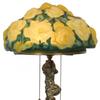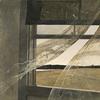Dazzling Retrospective of Degas Heads to Sole U.S. Venue This October
- HOUSTON, Texas
- /
- October 05, 2016
This fall, the Museum of Fine Arts, Houston, will be the exclusive U.S. venue for Degas: A New Vision, the most significant international survey in three decades of the work of Hilaire-Germain-Edgar Degas (1834–1917). While Degas’s reputation has often been confined to his ballet imagery, the artist’s oeuvre is rich, complex, and abundant, spanning the entire second half of the 19th century and the first years of the 20th. Opening October 16, Degas: A New Vision will assemble some 200 works from public and private collections around the world, and showcase Degas’s abiding interests across painting, drawing, photography, printmaking, and sculpture.
The MFAH has developed this major retrospective with the National Gallery of Victoria, in association with Art Exhibitions Australia. Some 60 additional loans will be exclusive to the Houston presentation, including such major works as Dancers, Pink and Green, from the Metropolitan Museum of Art, as well as preparatory drawings reunited with the iconic paintings that evolved from them, including Ballet Scene from Meyerbeer's Opera “Robert the Devil.”
Not since the 1988 landmark retrospective Degas—organized by Henri Loyrette, then at the Grand Palais in Paris; Gary Tinterow, then a curator at the Metropolitan Museum of Art in New York; and the late Jean Sutherland Boggs of the National Gallery of Canada in Ottawa—has the artist’s career been fully assessed. “The objective of Degas in 1988 was to piece together Degas’s work as a whole, in an accurate chronology; though it may seem surprising now, that had never been done,” said MFAH director Gary Tinterow. “That exhibition led to a revival of interest in Degas, and dozens of shows focused on individual subjects of his work—the bathers, the dancers, the jockeys, the portraits—or his influence on other artists. Now, we are able to benefit from that scholarship and, led by Henri Loyrette, the preeminent Degas biographer and scholar, put Degas back together again, and see the artist anew.”
“Degas: A New Vision will explore Degas’s measured continuity, his journey as he reworks one painting after another, and his total refusal to settle on a definitive composition,” commented Henri Loyrette, the Paris-based Degas scholar and former director of the Louvre who is the organizing curator of the exhibition. “This is the distinctive genius of Degas, which makes him both a precursor and particularly relevant to today. Each period looks at the artist in a different way. What can he tell us today? That is the basic purpose of this show.”
Exhibition Overview
Degas: A New Vision reveals the continuity within Degas’s work from the beginning to the end of his career, as he restlessly moved among the media of oil painting, drawing, pastel, photography, printmaking, and sculpture, all the while employing common themes and approaches, revisiting poses and motifs that he had used decades earlier, and reworking paintings that he kept in his studio.
Degas’s earliest work, from the mid-1850s, is rooted in the Renaissance; in one early self-portrait he depicts himself as a Florentine courtier. By the late 1850s, Degas had shifted to multi-figure compositions, among them the double portrait of his brother-in-law and sister, Edmondo and Thérèse Morbilli (1865). This vignette of daily life, set in a nondescript, bourgeois environment, reveals a fascinating interplay of the couples’ relationship: in this depiction, Thérèse remains no more than the shadow of her husband, half hidden behind the table, with one hand grasping her cheek and the other anxiously reaching for Edmondo.
From paintings like the Morbilli portrait, Degas moved to modern history painting based on classical subjects, experimenting as he deployed multiple figures on a canvas. In two studies for Young Spartans Exercising and Scene of War, both from the mid-1860s, Degas uses a range of expressive posture and unusual pose that had not been seen before in painting. In addition, both works feature posed figures that Degas would revisit in very different contexts 20, even 40 years later.
By the late 1860s, Degas had abandoned these mythological and classical subjects. “After a great many essays and experiments and trial shots in all directions, he has fallen in love with modern life,” the great critic, artist, and writer Edmond de Goncourt wrote in 1874, following a visit to Degas’s studio.
At his height, in the 1870s and 1880s, Degas pursued every facet, high and low, of modern life: café scenes, in his iconic In a café(1875), also known as L’absinthe; jockeys and steeplechases, in Out of the Paddock (Racehorses) (1868–72) and Before the Race(c. 1882); student ballerinas in Dance Foyer of the Opera at Rue Le Peletier (1872), The Dance Class (1873), and Dancers, Pink and Green (1890); everyday routines in the brothel, in The Name Day of the Madam (1879); life below stairs, in Women Ironing (1884–86). A trip to visit his mother’s family in Louisiana produced his famous A Cotton Market in New Orleans (1873). All are complex, multi-figure compositions with the focus on the incidental or the moment of anticipation: a young dancer about to perform a step; the top-hatted silhouette of a standing man in a room crowded with young ballerinas; the man reading the newspaper amid the bustle of the cotton exchange.
Still, Degas continued to mine his earlier work for poses and postures. The young lady leaning on her elbows toward a man at his desk in the 1870 interior Sulking, who looks up at the viewer as if interrupted, becomes the older woman in a pensive tête-à-tête in the 1885 Conversation. Degas would continue to explore variations on a single subject, such as the female nude, creating them in different media across more than half a century. A lesser-known aspect of this creative journey included a short, but intensive, foray into photography. Degas’s photographs—the majority of which were produced during the year 1895 and feature his inner circle of family members, friends, and fellow artists—reveal how the artist used the medium both as part of a creative continuum that included paintings and pastels and as an experiment with a new form of visual expression, resulting in photographic figure studies, portraits, and self-portraits that stand alone as works of art in their own right. Degas: A New Vision will unite over 20 of his surviving photographs for the first time since the 1998 exhibition Edgar Degas: Photographer, which debuted at the Metropolitan Museum of Art in New York and traveled to the J. Paul Getty Museum in Los Angeles and the Bibliothèque Nationale de France in Paris.
“Thirty years ago, no one even considered Degas’s late work, but the 1988 exhibition changed the public’s mind,” Loyrette said. Tinterow added, “The revelation then was how strong and modern the end of Degas’s career was—allowing us to see, for example, how artists like Lucien Freud can show us the shocking modernity of late Degas, and how we can appreciate the extravagant color and expressive line.” Degas himself said that by the 1890s he had given himself over to “an orgy of color.” The two figures inCombing the Hair (The Coiffure, 1896; once owned by Henri Matisse) are rendered in a blaze of red; The Bathers and other late studies depict female nude figures—alone or in groups; some composed, others random. For Degas, these expressions of the female form showed women as they saw, rather than imagined, themselves.
Although organized chronologically overall, the exhibition will also present specific groupings devoted to a particular theme or technique. In all, some 200 works will trace Degas’s career, across painting, drawing, photography, printmaking, and sculpture. The exhibition is drawn from private collections around the world as well as public collections that include those of the Musée d’Orsay in Paris, the National Gallery of London; the Metropolitan Museum of Art in New York, the Harvard Art Museums; Yale University Art Gallery; the Museum of Fine Arts, Boston; the Philadelphia Museum of Art; the Brooklyn Museum of Art; the J. Paul Getty Museum in Los Angeles; the Los Angeles County Museum of Art; the Thyssen-Bornemisza Museum in Madrid; and the Kunstmuseum Basel in Switzerland.
Publication
The exhibition will be accompanied by the monographic publication Degas: A New Vision, with principal essays by Henri Loyrette and a foreword by Tony Ellwood, director of the National Gallery of Victoria; Gary Tinterow, director of the MFAH; and Carol Henry, CEO of Art Exhibitions Australia.










100x100_c.jpg)


